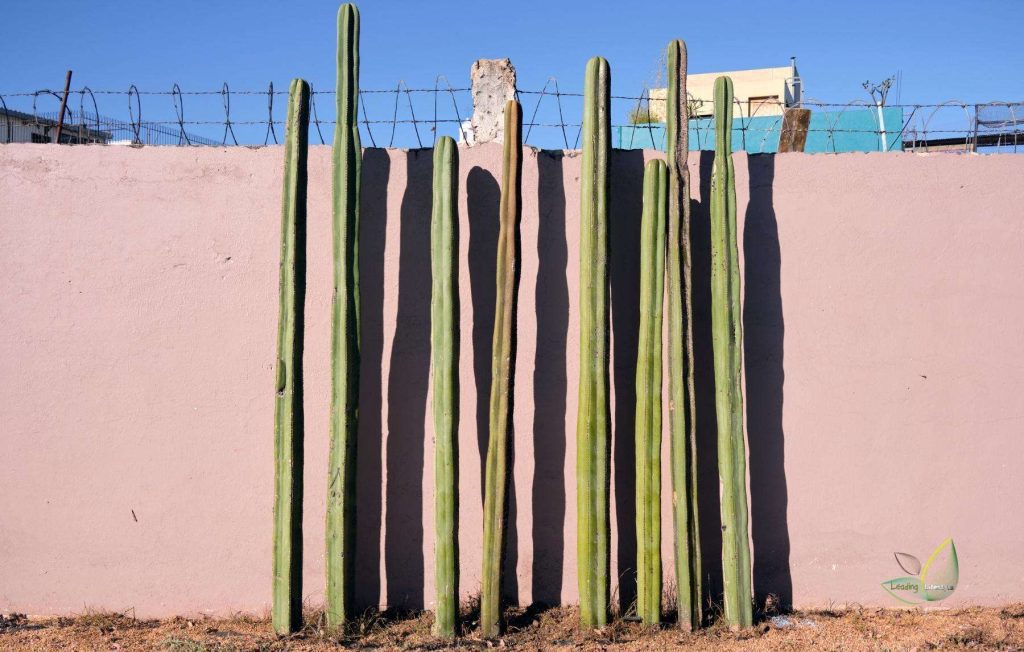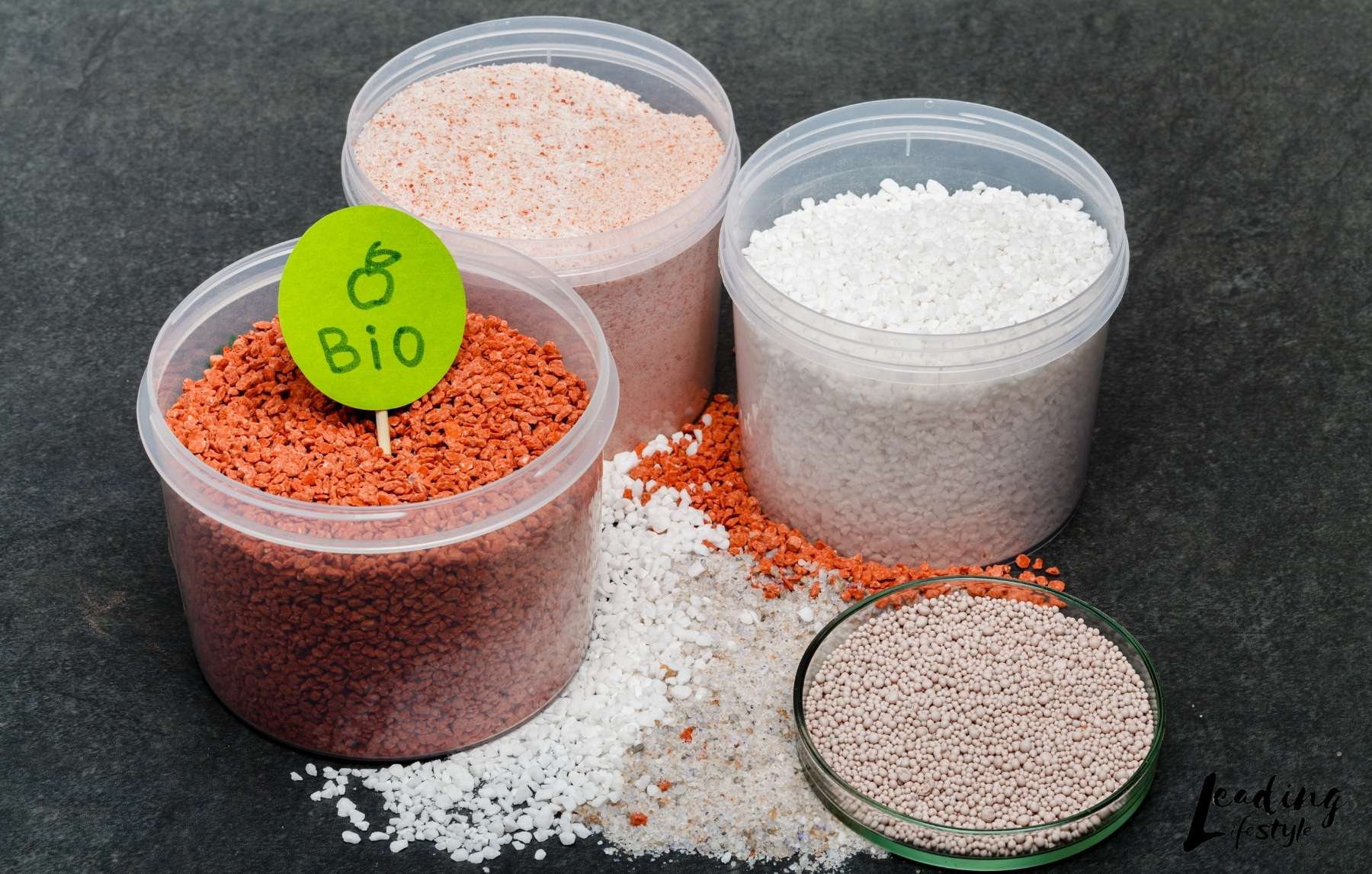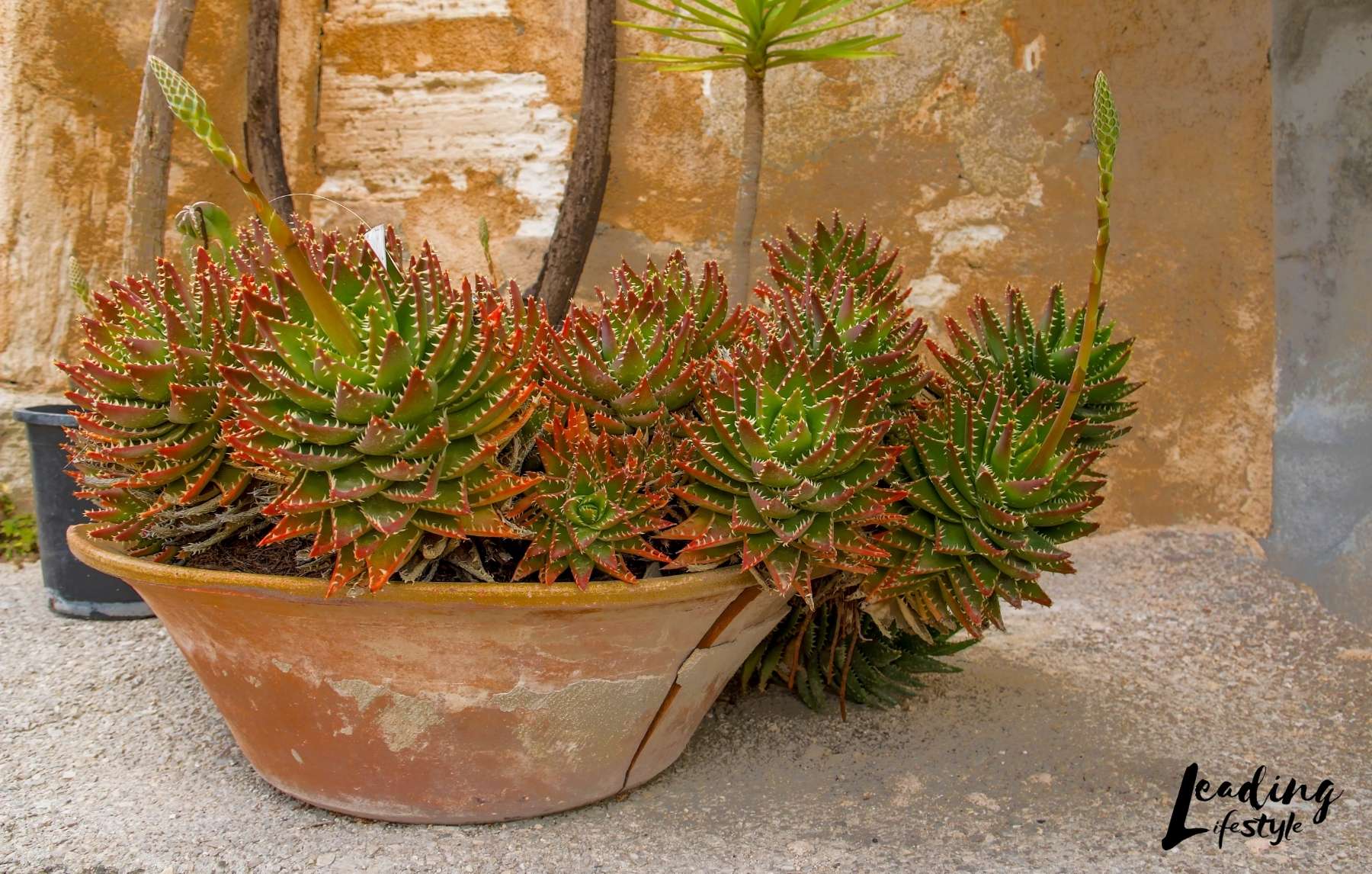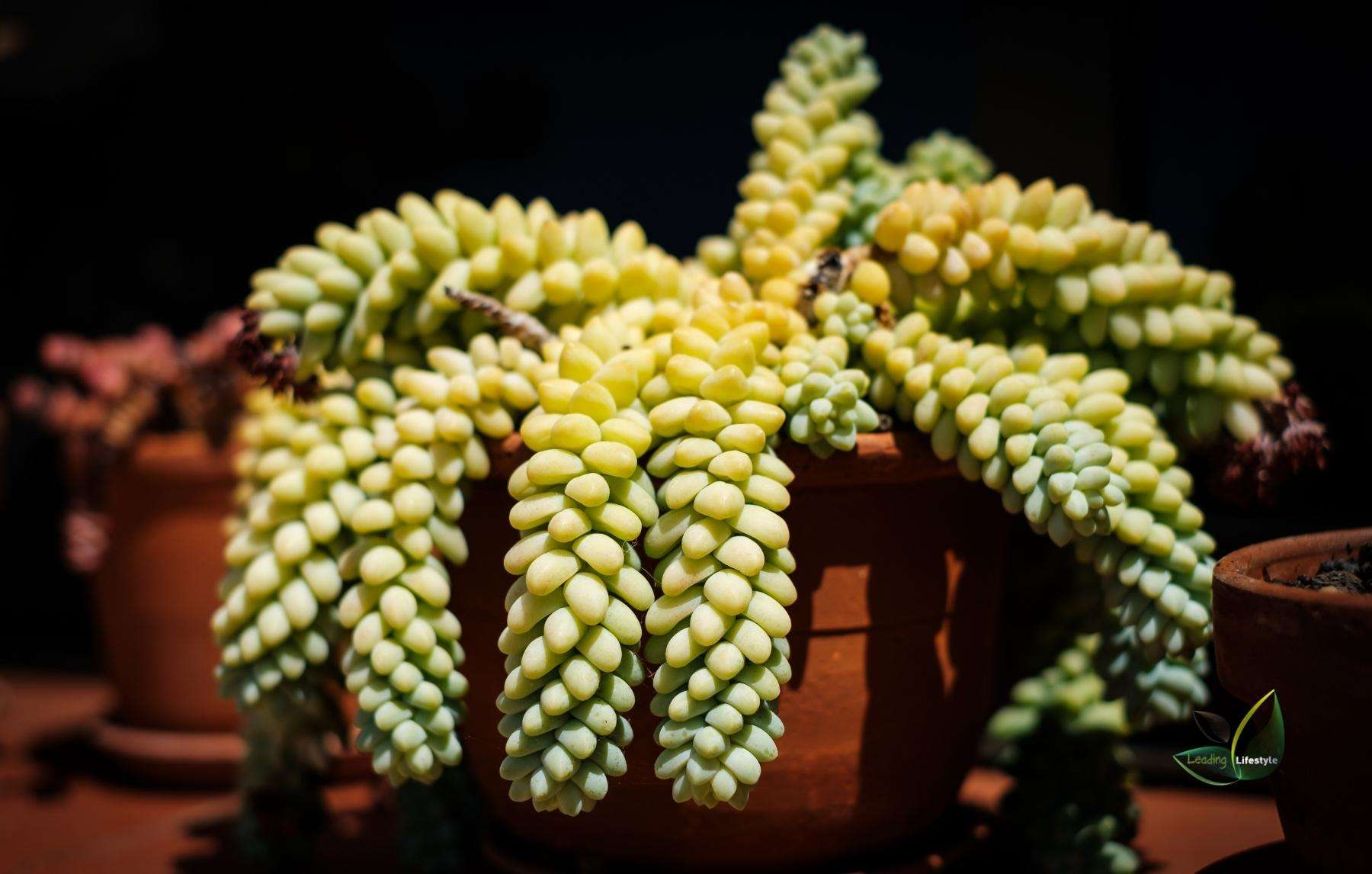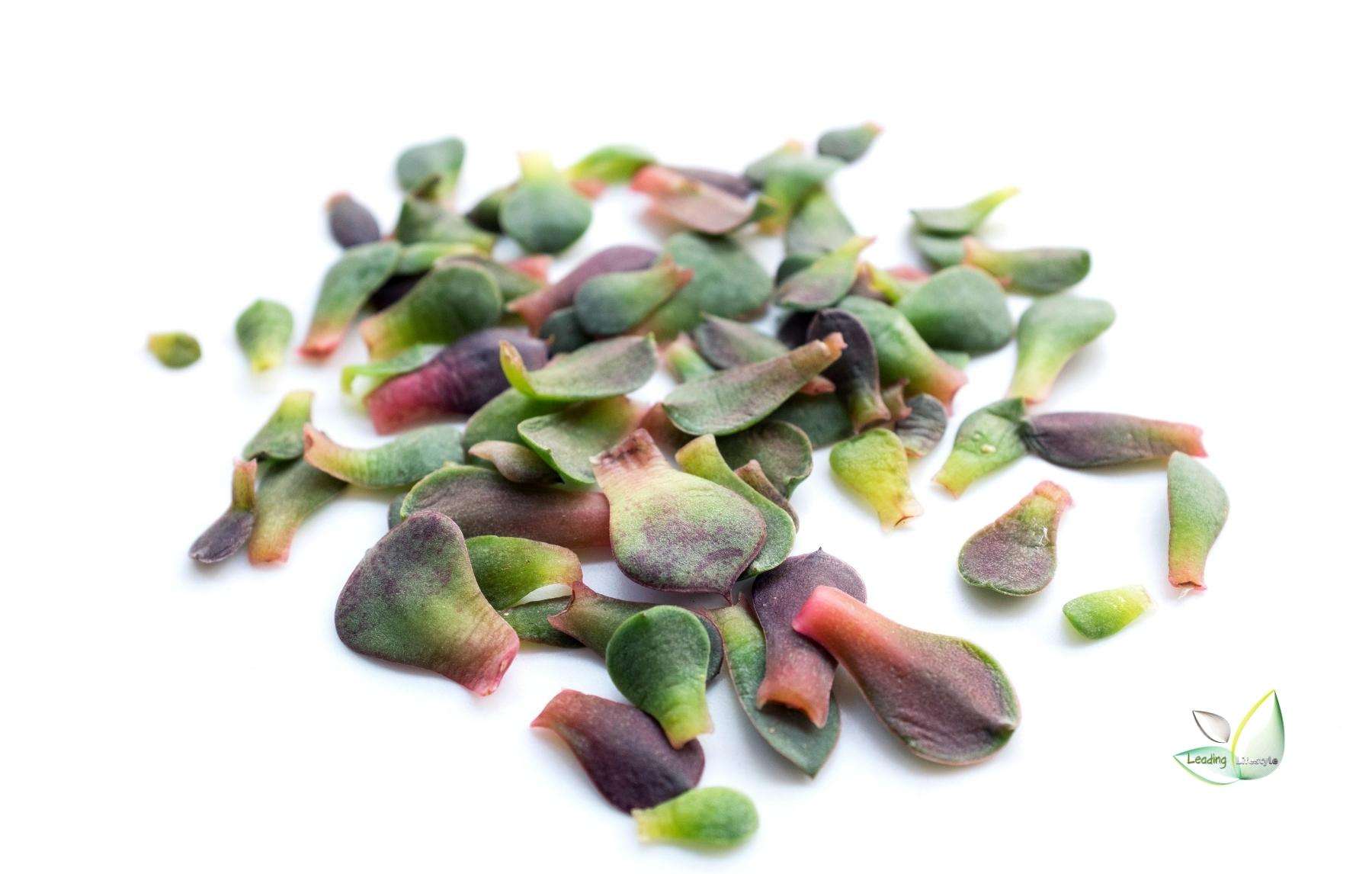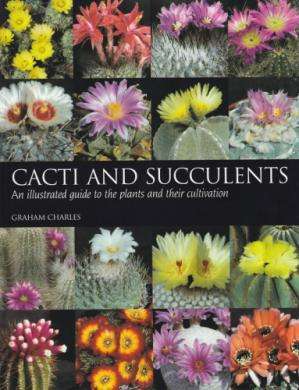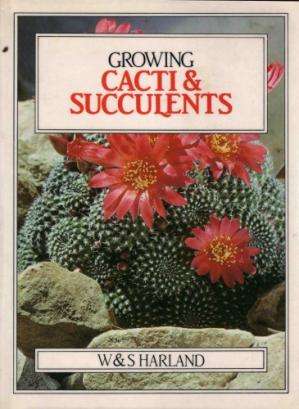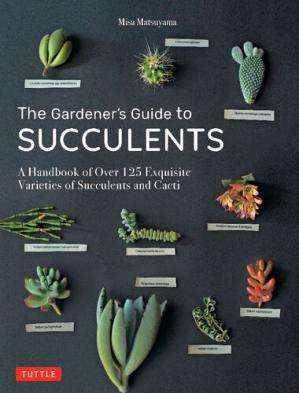If you’re looking to add a little spice and color to your garden, consider growing a Mexican fence post cactus!
This unusual cactus is easy to care for, but there are a few things you need to know before you get started.
This guide will tell you everything you need to know about this fascinating cactus, from planting instructions to tips for keeping it healthy. So go ahead and give one a try in your garden!
| Characteristics | |
|---|---|
| Category | Cactus & Succulents |
| Size | 20′ tall |
| Flower Color | Pinkish-red |
| Flower Season | Spring |
| Exposure | Full Sun or Partial Shade |
| Water | Occasional water during the hot, dry months |
| Growth Rate | |
| Hardiness | 25°F |
| Notes: | |
Identification
The Latin name is Lophocereus marginatus. It is also known as Pachycereus marginatus. More common names are Organ Pipe and Organ Cactus. The Fence Post reference comes from the fact that they make great outdoor hedges or barriers.
This plant has a lovely dark green-gray columnar body with well-defined ribs and white spines along the edges. They offer bell-shaped pink-red flowers that bloom in Spring.
The plant is native to Mexico and the southern USA, growing in dry, hot desert regions.
The Mexican fence post cactus, also known as the totem pole cactus, is a singular cactus with a tall stem and an erect or sprawling habit. The stem can be green, brown, or gray and covered in bumps. The leaves are large, flat, and dark green. The flowers are small and whitish blue.
The Mexican fence post cactus is native to the Chihuahuan Desert of northern Mexico and southern Texas. It is found near the bases of mountains and along stream banks.
The Mexican fence post cactus grows best in well-drained soil kept moist but not wet. It can be propagated by dividing the stem into pieces about 2 inches long.
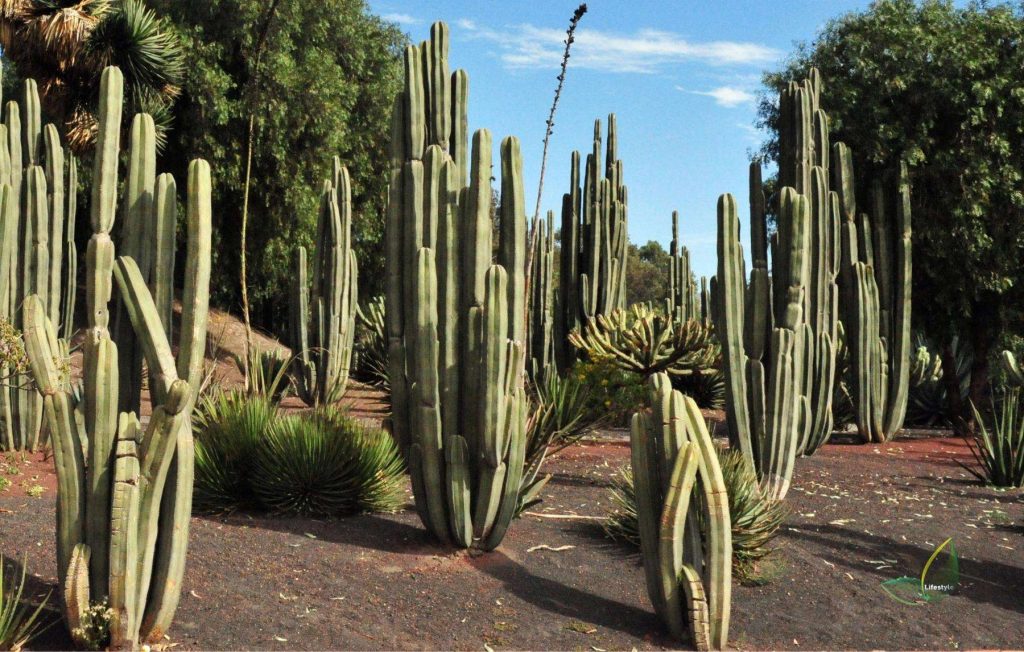
Mexican Fence Post Cactus Care
For the best plant care for Mexican Fence Post Cactus, be sure to plant in loose, well-draining soil and allow it to dry out totally between each watering.
The Mexican Fence Post Cactus loves full sunshine and needs at least 6 hours every day. Give only a little fertilizer during the spring and summer months using an organic cactus mix.
It grows best in temperatures ranging from 70°F to 80°F (21°C to 27°C). The Mexican Fence Post Cactus does not enjoy wet or humid conditions, so give it some time indoors if needed.
Soil
Mexican Fence Post Cactus is a cactus that grows in the Southwest United States. The cactus needs well-draining soil and full sun. It is propagated by stem cuttings taken in the early summer, which you must harden off before planting out.
Sandy Soil Mix
Sandy soil is composed of a mixture of sand and soil particles. Sandy soils are easy to work, but they don’t hold water well and can be easily dry. Sandy soils are good for growing plants that need sunlight and little water, such as cactus and succulents.
To make a Sandy soil mix:
- Add 3 cups of sand to every cup of soil.
- Mix the sand and soil well.
- If necessary, add more water until the mixture is wet but not too wet.
- Use the Sandy soil mix like any other soil mix.
Tip: To make sandy soil that is more resistant to drying out, add some clay or loam to the mix.
Sandy Soil Mix Supplies
3 cups of sand
1 cup of soil water
Lighting:
Mexican Fence Post Cactus should be kept in indirect light. Too much direct light can cause the cactus to turn yellow and weak.
Light
This cactus requires bright light to thrive. They can do well in a south or west-facing window but should not be placed near a door or other open areas where direct sunlight may reach them.
When growing Mexican Fence Post Cacti, they should be given plenty of fresh air and water. They are resistant to most pests and diseases but should be fertilized every two years with a balanced fertilizer.
Sunlight and Location
Mexican fence post cactus are adaptable to various light conditions and tolerate a wide range of temperatures. They can be kept in full sun or less direct light but should not be moved from their location during the winter.
If you live in an area where the temperature regularly dips below freezing, you may want to move your cactus into a warmer location for the winter.
The cactus should be kept moist but not wet. It does well in a pot with good drainage but can also tolerate being planted directly.
If you live in a humid climate, mist your cactus occasionally to help keep it moist. Do not over-water or let the soil become soggy.
Mexican fence post cactus is easy to care for but does require some occasional attention to keep them healthy and flourishing.
Signs of Insufficient Light
Mexican Fence Post Cactus are cacti found growing in the Sonoran Desert of Mexico. Native to the region, these cacti are popular for their striking appearance and interesting shape.
While they can grow in various soils and climates, the Mexican Fence Post Cactus typically need less light than other cacti. Here are some signs that your Mexican Fence Post Cactus may not be getting enough light:
- The plant’s leaves will become thin and sparse
- The plant will stop growing or may only grow slowly
- The plant will produce flower buds but no flowers
If you notice any of these signs, you should give your Mexican Fence Post Cactus more light. You can increase the light level by moving the cactus closer to a window or turning on artificial light at night.
Tips to Provide Sufficient Light with Proper Location
To provide sufficient light for your totem pole cactus, place it in a location that receives direct sunlight. The best location is near a window where the light can penetrate through the glass.
If you cannot get direct sunlight, try to place the cactus in a well-lit area. Avoid placing it in a spot that receives too much indirect light or shade.
Minimum Watering
Mexican fence post cactus, also known as totem pole cactus, is a succulent plant that can live for many years with proper care. This cactus can be grown in a pot or on the ground and is best in sunny locations.
Mexican fence post cactus should be watered sparingly when growing in a pot and more frequently when growing in the ground. When watering Mexican fence post cactus, use room-temperature water and let the soil dry before watering again.
Do not over-water this cactus, and do not allow it to sit in water for too long. If your Mexican fence post cactus leaves start to look droopy, water less frequently until the problem is resolved.
Signs of Improper Watering
While it is not always easy to tell when a cactus requires water, a few indicators can help determine if your cactus is receiving the hydration it needs. Signs of improper watering include: drooping leaves, brown patches on the stem or bark, dried out soil, and faded or crinkled leaves.
If you notice any of these signs, it is important to give your cactus the hydration it needs by watering it properly. Here are some tips for watering Mexican fence post cactus:
- Make sure the pot has good drainage. Failing to have good drainage can lead to water sitting on the pot’s surface and not reaching the roots.
- Water deeply and infrequently. Thoroughly wetting the soil will help prevent root rot and promote healthy growth. Only give your cactus water once per week or once every two weeks.
- Use a timer or water monitoring system to help you stay on top of watering schedules.
Tips for Proper Watering
Watering your Mexican fence post cactus correctly is essential to keep them healthy and happy. Here are some tips to help:
- Monitor the plant’s water level regularly and adjust it as needed. Keep in mind that this cactus loves a well-drained soil mix.
- If you notice any wilting, drooping leaves, or browning of the cactus’s skin, it’s time to water more frequently. Try adding a teaspoon of salt per gallon of water if desired.
- Allow the soil to dry out between waterings for best results.
Temperature
You should keep Mexican Fence Post Cactus at temperatures between 70 and 80 degrees Fahrenheit. If the cactus is kept too cold, it will stunt its growth and die. If the cactus is kept too hot, it may also die.
High Temperature
Totem pole cactus (Echinopsis teretifolia) is native to the high plateau regions of central Mexico. They are a slow-growing species that can take up to 10 years to reach maturity.
These cacti need plenty of sunlight and well-drained soil, so ensure your garden has both before adding this species. Be sure to water them regularly, particularly in summer when the soil is dry, and fertilize every two weeks in early Spring and fall.
Once these cacti are established, they are relatively maintenance-free. If you experience any problems, such as brown patches on the skin or drooping branches, give them a good soak in water and a solution of diluted muriatic of potash or iron until the problem clears.
Tips to Maintain Ideal Temperature
By definition, a cactus is a plant that lives in a desert environment. Consequently, cactus care is very important for these plants. Temperature is one of the most important factors in cactus care.
To maintain an ideal temperature for Mexican fence post cactus , place the plant in a brightly lit area with filtered light. This will help the cactus conserve energy and avoid becoming stressed.
The ambient temperature should be between 66 and 78 degrees Fahrenheit. Do not allow the temperature to exceed 82 degrees Fahrenheit. You can bring your cactus inside during cold weather months if you live in a cold climate.
Make sure to bring it back outside when the weather warms up again.
Water your cactus sparingly to prevent waterlogging and root rot. Use room-temperature water instead of hot or cold water, damaging the plant’s delicate roots.
Use a gentle stream of water from a distance instead of direct sprayings, as this will help prevent root damage. Never use tap water on cacti because it contains chemicals that can kill them.
Humidity
The Mexican Fence Post Cactus is a succulent native to the Chihuahuan Desert. It is a slow-growing cactus that needs plenty of moisture to thrive. This cactus can be kept in a succulent garden or sunny windowsill.
The Mexican Fence Post Cactus does best in temperatures between 60 and 80 degrees Fahrenheit.
When watering your Mexican Fence Post Cactus, make sure to water regularly but not excessively; this cactus prefers a moisture level of around 50%.
Mist your plant with water every few days to keep it hydrated during low humidity. Once winter hits, reduce the watering frequency to once every two weeks, as the plant will require less water.
Low Humidity
Mexican Fence Post Cactus require low humidity levels to thrive. They should be kept in an area with 75% humidity or higher in dry climates. If the humidity drops below 60%, the cactus will experience browning and eventually die back.
Tips to Maintain Low Humidity
Mexican Fence Post Cactus are very popular succulents for indoor and outdoor gardens. They are easy to grow, but they require special care to thrive and produce beautiful flowers. Here are some tips to help you keep your Mexican Fence Post Cactus happy and healthy:
- Keep the plant’s soil moist but not wet. A soil mix that is too wet will cause the cactus to rot, while a soil mix that is too dry will cause the cactus to die.
- Do not over-water your cactus. Over-watering can cause the plant to become root-bound and eventually die.
- Do not move your cactus once it has been planted. This will likely damage the roots and cause the plant to die.
Fertilizer
Mexican Fence Post Cactus is a succulent that prefers well-drained soil and needs a good fertilization program to thrive. A balanced fertilizer program will include both Nitrogen and Phosphorous. Generally speaking, cacti need around 1-1.5 ounces of nitrogen per gallon of soil, while you should give phosphorus at half that amount.
A soluble fertilizer is best for cactus, as they tend to be sensitive to heavy metals and other toxins in the soil. To keep it healthy and growing, you should also repot Mexican Fence Post Cactus every two or three years.
Minimal Fertilizer
The Mexican Fence Post Cactus is a low-growing cactus that can reach up to 3 feet. The cactus requires very little fertilization and can be propagated from cuttings taken in the Spring.
Propagation
The Mexican Fence Post Cactus is a slow-growing cactus that can take up to 10 years to bloom. When growing this cactus, provide good drainage and fertilize every two months during the blooming season. The Mexican Fence Post Cactus can be propagated by root cuttings taken in late winter or early Spring.
Growth
Mexican Fence Post Cactus is a succulent that can be grown indoors or outdoors. It needs indirect sunlight and should be kept dry in the winter.
As with most cacti, you should water Mexican Fence Post Cactus regularly but sparingly; over-watering can cause root rot.
The cactus will grow up to 6 feet tall, so plan on having a large pot if you want to keep one as a plant specimen.
Growth Habits
Mexican Fence Post Cactus is one of the more difficult cacti to care for, but with a little bit of research and preparation, you can have a healthy, happy cactus that will reward you with beautiful blooms.
Mexican Fence Post Cactus typically grow to around 3-4 feet tall and wide, with a diameter of around 2 feet. They require moderate watering but do best when they are kept evenly moist.
During times of drought, they may benefit from withholding water until they show signs of rehydration (usually turning slightly brown).
If your cactus is in full sun or light shade, it is generally necessary to water it less to prevent over-watering.
Mexican Fence Post Cactus are not very sensitive to pH levels, but they prefer slightly acidic soil. Adding organic matter (such as compost) to your substrate may help improve the pH level of your soil if it is too acidic.
Feeding your cactus once a month with a balanced fertilizer should be sufficient. Do not overfeed your cactus, as this may lead to root rot.
Flowering and Fruiting Habits
Mexican Fence Post Cactus is a fast-growing cactus native to the southern United States and Mexico. It has several flowering and fruiting habits that may surprise you.
First, Mexican Fence Post Cactus flowers are not typically big or showy. However, they can be quite colorful, with colors including yellow, orange, red, and purple.
Second, the Mexican Fence Post Cactus can produce fruit in different shapes and sizes.
Third, the Mexican Fence Post Cactus can bloom multiple times during the season. Fourth, the fruit of the Mexican Fence Post Cactus is edible. Fifth, the Mexican Fence Post Cactus is relatively easy to grow and care for.
Potting and Repotting
Mexican fence post cactus are easy to grow but need a little care- especially when it comes to water and fertilization. Here is a guide on how to pot and repot them:
When potting a Mexican fence post cactus, use a well-draining potting soil and fill the pot halfway with the soil. Then add the cactus, making sure the roots are well-covered. Fill in the rest of the pot with soil and water until the plant is fully submerged. Keep the soil moist but not wet, and fertilize with a dilute fertilizer solution every two weeks.
Problems Due to Wrong Pot Size and Type
When deciding on the pot for your Mexican fence post cactus, be sure to choose one that is large enough to accommodate the plant’s root ball and wide enough to allow for proper drainage.
Another important factor is the potting soil you will use; a rough mix will work best for this cactus. Make sure the pot has holes in the bottom so water can drain, and avoid using plastic pots as they can cause your cactus to develop root rot.
Tips for Selecting the Correct Pot
If you’re in the market for a new pot for your Mexican Fence Post cactus, it’s important to select the right one. Here are a few tips to help you make that decision:
- First and foremost, make sure the pot is large enough. Mexican Fence Post cacti can grow up to 12 inches tall, so a pot that is too small will not be able to accommodate them.
- Next, consider the shape of the pot. Some pots have straight sides, while others have flared sides or a curve at the bottom. Make sure the pot you choose has features that match your cactus’ natural shape.
- And lastly, think about how you’ll be using the pot. Will it be used as a decorative piece on a table, or will it be used to house your cactus in a warm, dark location? The more practical considerations you make when selecting your pot, the easier it will be to find the perfect one for your cactus.
Repotting Mexican Fence Post Cactus
Mexican Fence Post Cactus needs moderate to high light and consistent waterings. Repotting is necessary every three to four years, depending on the size of the cactus. Follow these steps to repot a Mexican Fence Post Cactus:
- Remove the potting soil and any old growth from around the cactus.
- Gently pull up the roots and remove them from the pot. If there are any spines or sharp edges on the roots, remove them before repotting.
- Fill a new pot half full of fresh potting soil and place the cactus in it. If the cactus is very large, you may need to divide it into several pots. Water the cactus well and let it soak in until the soil is moist but not wet. Do not overwater!
- Place a plastic wrap around the root ball and fill the gap between the root ball and the wrap with additional soil. This will help keep moisture in while you transport your cactus. Move the cactus to its new pot, adding more soil and water well.
Tips to Repot Mexican Fence Post Cactus
Growing Mexican fence post cactus is easy with a few basic tips. Follow these guidelines, and your cactus will be happy and healthy for years to come.
Repotting a cactus is not difficult, but it is important to follow the right procedures to ensure the plant’s long-term health and success. Here are some tips to help you repot a Mexican fence post cactus:
- Remove the old pot and root ball if necessary. Cut away any excess roots that have grown around the pot or inside the root ball. Ensure the new pot has ample drainage and isn’t too large or small.
- Select a fresh, well-drained potting soil mix. Make sure the soil is evenly moistened before filling the pot. Plant the cactus at an angle so that the stem is vertical when it reaches the top of the new pot.
- Place a layer of soil over the entire root ball, pack it firmly and tamp it down slightly. Add another layer of soil, repeating these steps until you reach the top of the new pot.
Toxicity of Mexican Fence Post
Mexican fence post or totem pole cactus (Epithelium striatum) is a cactus that grows in dry areas of the southwestern United States and northwestern Mexico. This species can be toxic if ingested, with symptoms including nausea, vomiting, diarrhea, and abdominal pain.
If you are experiencing any of these symptoms after coming in contact with this plant, please seek medical attention.
Where to buy Mexican Fence Post Cactus
Common Problems with Mexican Fence Post Cactus
Mexican Fence Post Cactus can be a beautiful addition to any garden, but they can also be problematic if not cared for properly. Here are some of the most common problems with this cactus and tips for fixing them.
If your Mexican Fence Post Cactus is losing leaves, it may be due to a lack of water. This plant needs regular watering to survive and flourish. If the water does not reach the cactus adequately, it will lose leaves. Try filling a used milk jug with water and set it next to the cactus for a few days to see if that helps. If not, you may need to purchase a water fountain for your cactus or get a water hose set up specifically for cacti.
If your Mexican Fence Post Cactus is having trouble getting established, try fertilizing it every two weeks during the spring and summer months. Use a balanced fertilizer containing nitrogen, phosphorus, potassium, and magnesium. Apply the fertilizer to the soil around the cactus using a garden spade or fork. Make sure to wet the soil before adding the fertilizer so the roots will absorb it.
Pest Control
Mexican Fence Post Cactus, Totem pole cactus, also known as totemic cactus, is a common cactus found in the Southwest and parts of Texas. This cactus is grown for its decorative prickly stems and green leaves. Mexican Fence Post Cactus can be propagated by rooting offsets or taking cuttings. Young plants need plenty of water, but they do not require fertilization.
Stems Turn Yellow and Mushy
If your Mexican fence post cactus shows yellow and mushy-looking stems, it’s time to take action. Here are three tips to help keep your totem pole cactus healthy:
- Give it lightly: Bring in some bright light by placing a light above or near the pot or using a bright window. This will help promote growth and help prevent yellowing and mashing of the stem.
- Feed it right: Feed your cactus a balanced diet that includes plenty of water and fertilizer. Use a cactus food specifically designed for totem pole cacti if possible.
- Prune it often: Prune your cactus regularly to keep it looking its best. Cut off any brown or slow growth, especially around the base of the plant.
Mexican Fence Post Cactus In-depth Propagation Guide
Mexican Fence Post Cactus is a succulent that can be grown in many parts of the world. It can be propagated by dividing the plants in Spring or fall. When dividing, isolate the new divisions from the old ones and give them adequate water and sunlight.
Tips to Grow Mexican Fence Post Cactus Problem-free
Mexican fence post cactus can be a spectacular addition to any garden, but like all plants, they require proper care to thrive. Here are some tips for growing this cactus successfully:
- Choose a spot with lots of suns and good drainage. Mexican fence post cacti do best in moderately moist soil but not soggy.
- Water sparingly during the summer months so the cactus doesn’t get bogged down. In the winter, water occasionally if the soil is dry.
- Fertilize only when the soil appears dry, and the plants look yellow or brown. Use a balanced fertilizer that contains phosphorus, potassium, and nitrogen.
- Prune off dead or damaged branches in late winter or early Spring, just before new growth begins.
Frequently Asked Questions About Mexican Fence Post Cactus
Like all succulents, the Mexican fence post cactus requires very little care. They do best in full sun and well-drained soil. Once established, these plants are resistant to pest and disease outbreaks.
Yes, the Mexican Fence Post Cactus (Pachycereus marginatus) is a cactus that can grow in most indoor environments, provided they receive filtered light and plenty of water.
The plant should be watered regularly but never allowed to sit in water, and you should repot it every two years or when the plant becomes root-bound.
Mexican Fence Post Cactus are susceptible to spider mites, so it is important to monitor these pests and treat them as necessary.
Yes, Mexican fence post cactus (Pachycereus marginatus) is a prickly plant that can be challenging to care for.
First, you'll need to decide whether or not you want to use a grow light to help your cactus thrive. There are pros and cons to both methods, so make sure you weigh them carefully before deciding. If you choose to use a light, keep a few things in mind.
First, make sure the light is placed close to the cactus to get enough sunlight.
Second, choose a light that emits blue or ultraviolet light (UV). These wavelengths are beneficial for cacti because they promote the growth of protective chemicals called lipids.
Finally, be sure to adjust the intensity of the light as needed so that it doesn't burn the cactus or cause too much heat exposure.
If your Mexican fence post cactus is succumbing to overwatering, there are several things you can do to help revive it.
First, make sure the cactus receives the necessary amount of sunlight and water.
If it is in a container, move it to a location where it will receive more direct sunlight.
Second, use a soil moisture meter to ensure the soil is properly watered.
Third, add a layer of mulch around the cactus to help retain moisture and keep weeds at bay. Finally, fertilize the cactus every two months with a high-nitrogen fertilizer.
exican fence post cactuses are beautiful plants that add personality and character to any landscape.
They are also unique succulents popular as wedding centerpieces or indoor plants. In addition, Mexican fence post cactus are low-maintenance plants that won't require extensive watering or fertilization.

